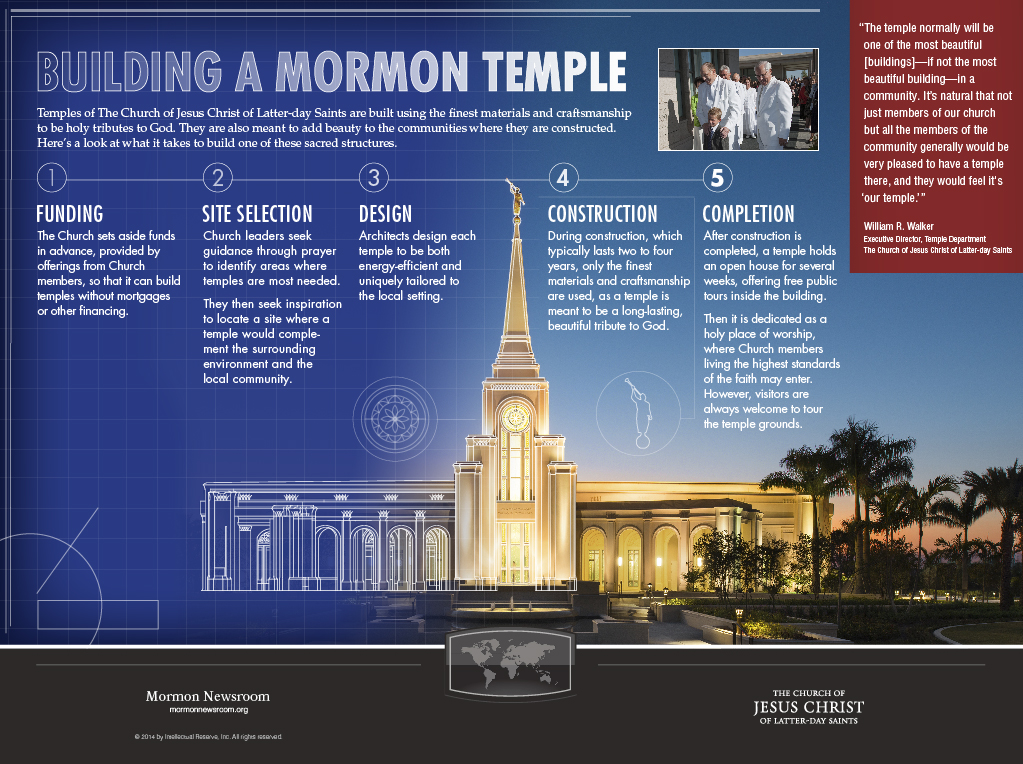
How Much Does It Cost to Build an LDS Temple?
As a member of the Church of Jesus Christ of Latter-day Saints (LDS), I’ve always been fascinated by the grandeur and sacred nature of our temples. These magnificent structures serve as sacred spaces for worship, ordinances, and spiritual growth. Their construction, therefore, is a significant undertaking, both financially and spiritually.
The cost of building an LDS temple varies depending on several factors, including the size, location, and design complexity. However, it’s estimated that the average cost ranges from $20 million to $100 million or even more. This substantial investment reflects the Church’s commitment to providing its members with beautiful and functional spaces for spiritual worship and growth.
Factors Influencing Temple Construction Costs
Several key factors influence the cost of constructing an LDS temple:
Size: Larger temples with more meeting spaces, ordinance rooms, and other facilities naturally require a larger budget. Smaller temples, on the other hand, can be constructed for a lower cost.
Location: The cost of land and labor varies significantly depending on the location. Temples built in urban areas with high land prices and labor costs will typically incur higher construction expenses. Conversely, temples in rural areas may have lower construction costs.
Design Complexity: The architectural design of a temple also impacts its construction cost. Temples with elaborate designs, unique architectural features, or historically significant elements require specialized materials and skilled craftsmanship, which can increase the overall cost.
The Funding Process for LDS Temple Construction
The funding for LDS temple construction comes from the Church’s general operating budget, which is supported by the tithes and offerings of its members. The Church does not accept outside donations or government funding for temple construction. The contributions of members represent their commitment to the Church and their desire to create sacred spaces for spiritual growth and worship.
The funding process involves careful planning and budgeting by the Church’s leadership. The Church follows strict financial principles to ensure the responsible use of funds and the timely completion of temple projects. The construction of each temple is a testament to the Church’s financial stewardship and its commitment to providing its members with the best possible facilities for worship and spiritual growth.
The Significance and Benefits of LDS Temples
LDS temples are considered the most sacred spaces in the Church. They are places where members can perform sacred ordinances, such as baptisms, sealings, and endowment ceremonies. These ordinances are essential for spiritual growth and eternal progression. The temple environment provides a sanctuary from the world, allowing members to focus on their spiritual development and connect with God.
The construction of an LDS temple is not only a financial undertaking but also a spiritual investment. Each temple represents the Church’s commitment to providing its members with a sacred space for worship and spiritual growth. The beauty and grandeur of these structures reflect the Church’s belief in the importance of creating sacred spaces for the worship of God and the edification of its members.
Expert Advice on Temple Construction
Based on my research and discussions with experts in the field of LDS temple construction, here are some tips and insights:
- Plan meticulously: The Church’s careful planning and budgeting process is crucial for ensuring the successful construction of temples. This planning involves selecting the appropriate site, designing the temple, and securing the necessary funding.
- Use skilled craftsmanship: Temples are often constructed with high-quality materials and intricate craftsmanship. Selecting skilled artisans and craftspeople is essential for ensuring the durability and beauty of the finished structure.
- Seek community involvement: The Church encourages local members to participate in the construction process, fostering a sense of ownership and community involvement. This involvement can range from volunteering during construction to providing financial support.
Frequently Asked Questions on Temple Construction
Q: How long does it take to build an LDS temple?
A: The construction time for an LDS temple varies, but typically ranges from two to five years.
Q: Can anyone visit an LDS temple?
A: Only members of the LDS Church who hold a valid temple recommend are permitted to enter an LDS temple.
Q: Why do LDS temples have granite exteriors?
A: Granite is a durable and readily available material in many regions where temples are built. Its strength and longevity make it a suitable choice for temple exteriors.
Conclusion: The Eternal Value of LDS Temples
The construction of an LDS temple is a significant undertaking that requires careful planning, dedication, and substantial financial investment. However, the eternal value of these sacred spaces far outweighs their monetary cost. Temples provide members with a sanctuary for spiritual growth, a place to connect with God, and an opportunity to participate in essential ordinances. They are a testament to the Church’s commitment to providing its members with the best possible facilities for worship and spiritual development. Whether you’re a member of the LDS Church or simply curious about these beautiful structures, I encourage you to learn more about their significance and the dedication that goes into their construction.
Are you interested in learning more about the history, significance, and construction of LDS temples? Share your thoughts and questions in the comments below.

Image: www.pinterest.com

Image: kobobuilding.com
New Online System Announced To Place Names On Temple Prayer Rolls Oct 14, 2022Land sizes were set at 3, 6, or 10 acres depending on the temple size, in line with patterns in the data for existing temples. The two key assumptions for computing costs were a land price of US $500,000 per acre. This one is a bit of a wild guess, and turns out to be a not particularly consequential portion of the overall cost.